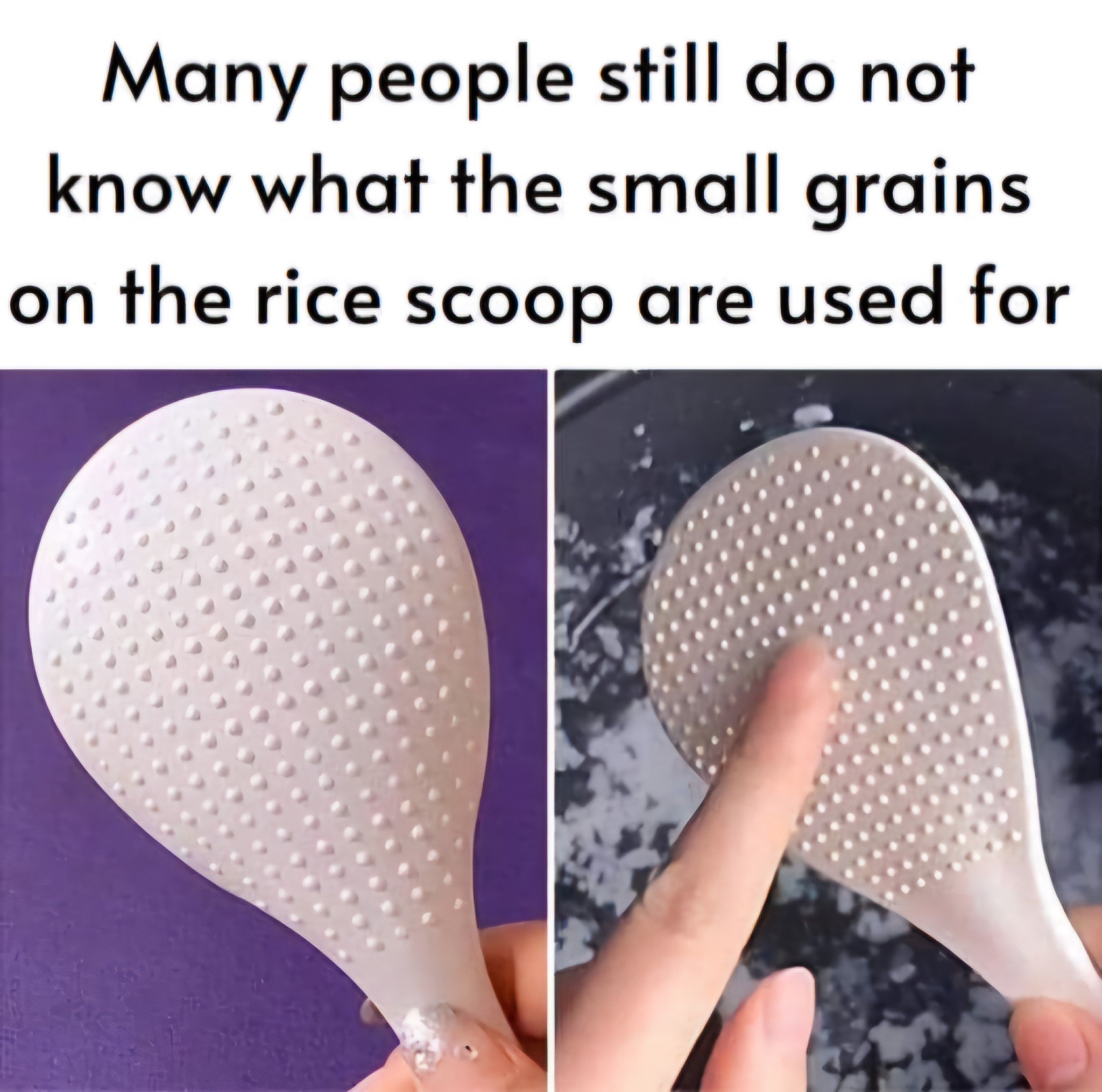If you’ve recently purchased a rice cooker, you might have noticed an unusual tool included in the box—a rice paddle. This simple utensil, often resembling a flat spatula with a rounded head, may seem insignificant at first glance, but it serves an essential purpose in your kitchen. Known as a “shamoji” in Japan, the rice paddle has been a staple in many households for centuries. Its design and functionality make it indispensable for preparing perfect rice every time. Let’s explore why this tool is so important and how it can enhance your cooking experience.

One of the primary reasons for using a rice paddle is to protect your rice cooker’s nonstick surface. The inner pot of a rice cooker is coated with a delicate nonstick material designed to make cooking and cleaning easier. However, this coating can easily be damaged if you use metal utensils, which may cause it to peel or lose its effectiveness. The rice paddle, typically made from plastic or wood, is safe for nonstick surfaces, preserving the integrity of your rice cooker and ensuring it lasts longer. Beyond that, the paddle is perfect for stirring, scooping, and serving rice without breaking the grains. This is especially important for dishes like sushi, where the texture and structure of the rice are crucial. Stirring rice with the paddle immediately after cooking helps release excess moisture, resulting in a fluffy and evenly textured dish.
For those who struggle to cook rice on the stovetop or find themselves making rice frequently, a rice cooker is a game-changing appliance. It takes the guesswork out of the process by automatically adjusting the temperature to ensure perfectly cooked rice every time. Simply add the rice and water, and the cooker does the rest. Many models include guides for the proper water-to-rice ratios, making it even easier to get consistent results. Chef Dale Talde, owner of Goosefeather, praises the precision of rice cookers, stating, “It’s a must-have appliance because even if you happen to put in too much water or not enough, it adjusts to help make perfect rice.”
Rice cookers aren’t just limited to cooking rice—they’re incredibly versatile. Many advanced models can handle other dishes, including curries, stews, oatmeal, and even cakes. Features like quick-cook settings and delayed start timers make meal prep even more convenient, offering flexibility for busy households.
To achieve perfect rice, there are a few essential steps to follow. First, always rinse your rice before cooking. Rinsing removes excess starch, which can make rice gummy, and helps reduce arsenic levels while washing away dust or bran residue. Min Kim Bryant, a market analyst, emphasizes the importance of rinsing rice, likening it to washing produce to ensure cleanliness and safety. For certain varieties, like sushi rice or brown rice, soaking the grains for about 30 minutes before cooking can improve their texture. This is particularly beneficial for thicker grains like wild rice, as it allows them to absorb water evenly and cook more thoroughly.
For those without a rice cooker, mastering stovetop rice cooking is a valuable skill. Chef JJ Johnson, owner of the rice-focused eatery Fieldtrip, advises using a large pot to allow the rice to expand evenly during cooking. Following the correct water-to-rice ratios is key to achieving the best results:
- Long-grain white rice: 1½ cups water to 1 cup rice
- Sushi rice: 1¼ cups water to 1 cup rice
- Short-grain brown rice: 2¼ cups water to 1 cup rice
Bring the rice and water to a boil, then lower the heat, cover the pot, and let it simmer. Cooking times vary: about 20 minutes for white rice and 45 minutes for brown rice. Once the water is absorbed, allow the rice to rest for 10 minutes before fluffing it gently with a rice paddle to enhance the texture.
To elevate your rice dishes, consider adding creative touches. Cooking rice in broth or coconut milk can enhance its flavor, while spices like turmeric or saffron can give it a vibrant color and aroma. Avoid stirring the rice while it cooks to keep the grains intact. For an added twist, toast freshly cooked rice by sautéing it in a pan with a little oil, creating a nutty aroma and a slightly crisp texture. Batch-cook rice, freeze it in individual portions, and reheat it with a splash of water or oil for quick and convenient meals. Leftover rice can also be transformed into delicious dishes like fried rice, rice pudding, or used as a base for hearty soups.
The humble rice paddle may seem like a minor tool, but it plays a significant role in preserving your rice cooker’s functionality and perfecting your dishes. When paired with a reliable rice cooker, it simplifies the process of making rice, turning it from a potentially daunting task into a seamless experience. Whether you’re preparing fluffy jasmine rice for dinner or crafting sushi for a special occasion, this dynamic duo is your key to culinary success. By understanding and utilizing the rice paddle, you can elevate your cooking and make every meal a masterpiece.





